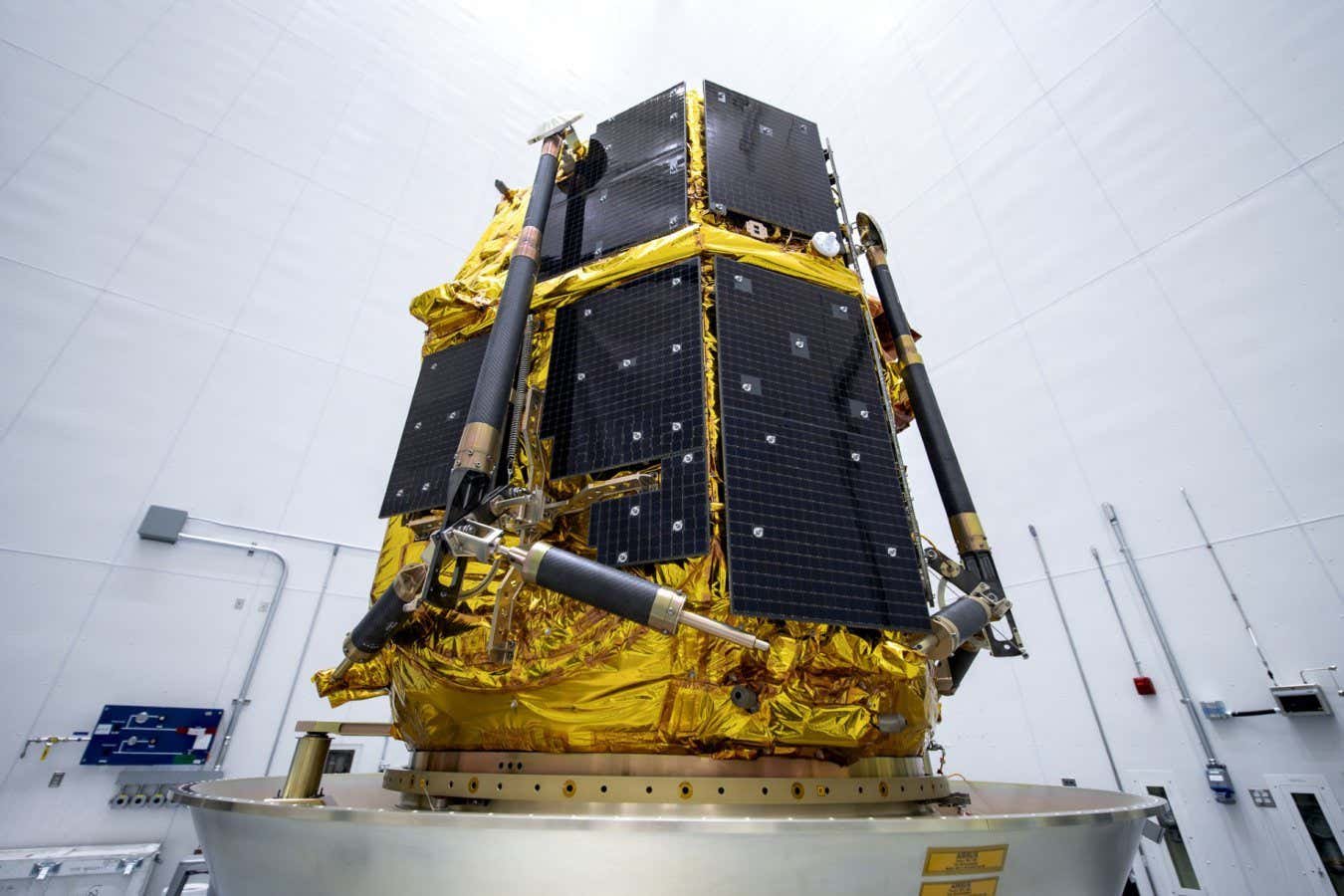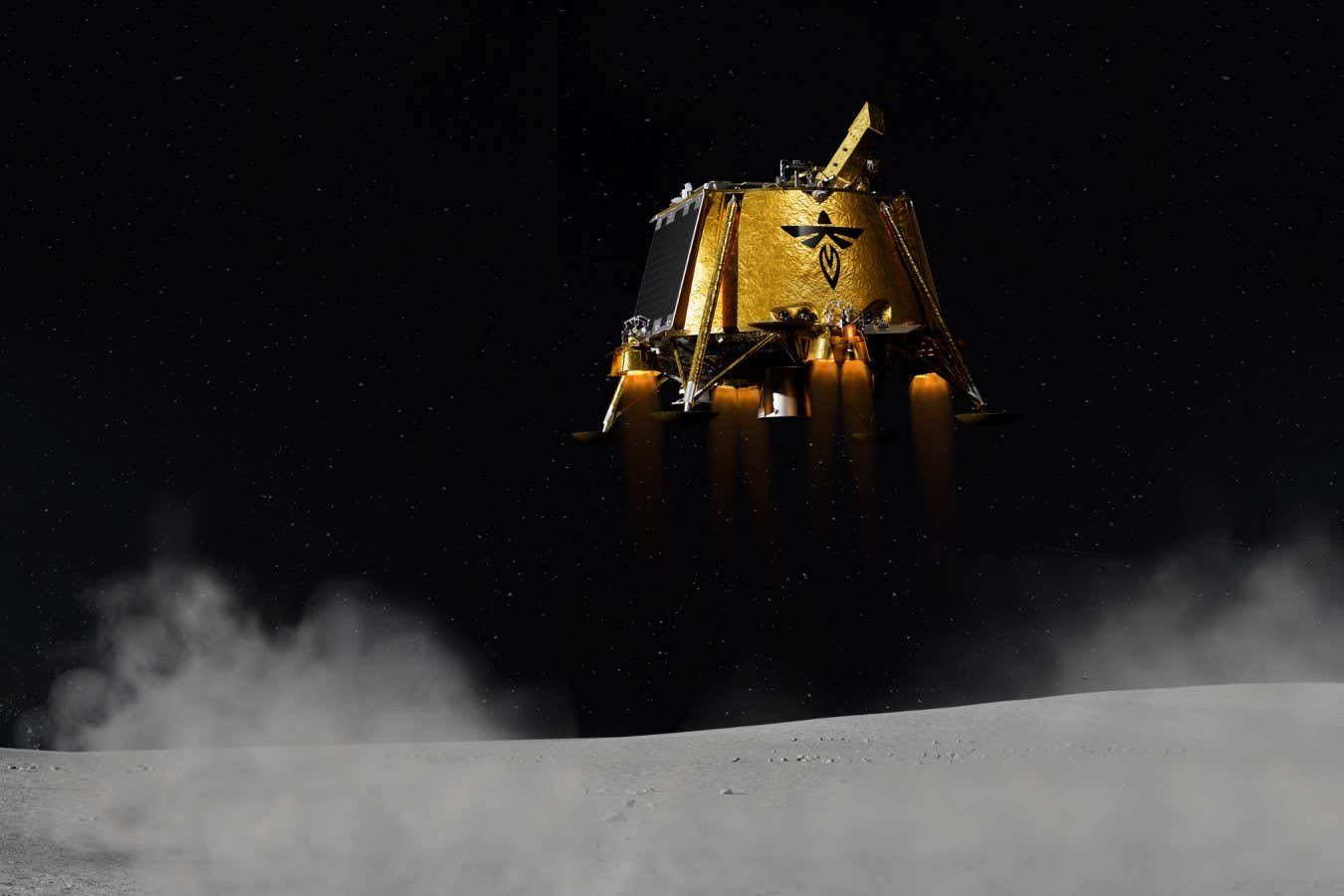An artist’s impression of the Blue Ghost landing on the moon
Firefly Aerospace
Two private spacecraft aiming to land on the moon are set to blast off aboard a SpaceX rocket, in a sign of increasing commercial activity on the lunar surface.
Firefly Aerospace’s Blue Ghost lander and ispace’s Resilience lander have both been given a ride on the same Falcon 9 rocket, currently scheduled to lift off on January 15 at 6:11 GMT (1:11 am EST) from NASA’s Kennedy Space Center in Florida.
The launch will be iSpace’s second attempt to land on the moon. Its first ended in failure when its Hakuto-R spacecraft crashed into the lunar surface in 2023. The Japanese company says it has since upgraded Resilience’s hardware and software to avoid the errors that led to that crash.
Meanwhile, the American company Firefly Aerospace will make its first attempt. The firm has a contract with NASA as part of the agency’s Commercial Lunar Payload Services (CLPS) program, which lands private companies to achieve its science goals.
Resilience will carry six payloads to the lunar surface, including an experiment to produce food on the moon using microalgae, and a microrover that will roam, analyze and photograph the landing area. Blue Ghost is set to carry a mix of 10 private and public payloads to the moon, including a radiation-resistant computer, a drilling machine that will measure how heat flows through the moon’s surface and a satellite receiver that will try to establish a permanent link with Earth’s GPS network.

The Resilience lunar lander is ready for launch
iSpace
Both missions will reach Earth orbit relatively quickly within minutes of launch, but it will take much longer to reach the moon. Blue Ghost will orbit Earth for 25 days before firing its engines to begin a four-day journey to the moon, where it will orbit for 16 days. After this, it will autonomously descend and land in a plain called Mare Crisium, where it will take two weeks to carry out its scientific objectives.
Resilience will take a more circuitous route on a journey that will see it fly past the moon a month after launch, drift in deeper space for several months, before then angling back toward the moon. Once in orbit, it must land in a plain called Mare Frigoris between four and five months after launch.
If the missions are successful, they will be the second and third private spacecraft to land on the moon. The first was Intuitive Machines’ Odysseus lander, which landed last year.
Blue Ghost and Resilience are the first of about a dozen spacecraft hoping to touch down on lunar soil this year, mostly powered by NASA’s CLPS, with many designed to test and demonstrate technology required for a future permanent human presence on the moon. These include a second and third mission from Intuitive Machines. IM-2 will look to drill near the lunar south pole for buried ice that can be used in future missions, as well as deploy two exploratory rovers and a lunar satellite to communicate with Earth.
Subjects:
